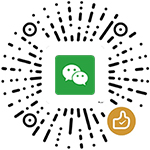Hands-On Q-Learning with Python: Practical Q-learning with OpenAI Gym,Keras,and TensorFlow
Authors: Nazia Habib
ISBN-10: 1789345804
ISBN-13: 9781789345803
Publication Date 出版日期: 2019-04-19
Print length 页数: 212 pages
Book Description
Leverage the power of reward-based training for your deep learning models with Python
Q-learning is a machine learning algorithm used to solve optimization problems in artificial intelligence (AI). It is one of the most popular fields of study among AI researchers.
This book starts off by introducing you to reinforcement learning and Q-learning,in addition to helping you get familiar with OpenAI Gym as well as frameworks such as Keras and TensorFlow.
A few chapters into the book,you will gain insights into model-free Q-learning and use deep Q-networks and double deep Q-networks to solve complex problems. This book will guide you in exploring use cases such as self-driving vehicles and OpenAI Gym’s CartPole problem. You will also learn how to tune and optimize Q-networks and their hyperparameters. As you progress,you will understand the reinforcement learning approach to solving real-world problems. You will also explore how to use Q-learning and related algorithms in real-world applications such as scientific research. Toward the end,you’ll gain a sense of what’s in store for reinforcement learning.
By the end of this book,you will be equipped with the skills you need to solve reinforcement learning problems using Q-learning algorithms with OpenAI Gym,Keras,and TensorFlow.
What you will learn
Explore the fundamentals of reinforcement learning and the state-action-reward process
Understand Markov decision processes
Get well versed with frameworks such as Keras and TensorFlow
Create and deploy model-free learning and deep Q-learning agents with TensorFlow,Keras,and OpenAI Gym
Choose and optimize a Q-Network’s learning parameters and fine-tune its performance
Discover real-world applications and use cases of Q-learning
Contents
Preface
Section 1: Q-Learning: A Roadmap
Chapter 1: Brushing Up on Reinforcement Learning Concepts
Chapter 2: Getting Started with the Q-Learning Algorithm
Chapter 3: Setting Up Your First Environment with OpenAl Gym
Chapter 4: Teaching a Smartcab to Drive Using Q-Learning
Section 2: Building and Optimizing Q-Learning Agents
Chapter 5: Building Q-Networks with TensorFlow
Chapter 6: Digging Deeper into Deep Q-Networks with Keras and TensorFlow
Section 3: Advanced Q-Learning Challenges with Keras,TensorFlow,and OpenAl Gym
Chapter 7: Decoupling Exploration and Exploitation in Multi-Armed Bandits
Chapter 8: Further Q-Learning Research and Future Projects
Assessments
Other Books You May Enjoy
Index
Hands-On Q-Learning with Python: Practical Q-learning with OpenAI Gym,Keras,and TensorFlow
未经允许不得转载:finelybook » Hands-On Q-Learning with Python: Practical Q-learning with OpenAI Gym,Keras,and TensorFlow
相关推荐
- Practical Machine Learning and Image Processing: For Facial Recognition,Object Detection,and Pattern Recognition Using Python
- Statistics for Data Scientists and Analysts: Statistical approach to data-driven decision making using Python
- C++: The Comprehensive Guide to Mastering Modern C++ from Basics to Advanced Concepts with Hands-on Examples, and Best Practices for Writing Efficient, Secure, and Scalable Code
- Python for Excel Users: Know Excel? You Can Learn Python
 finelybook
finelybook

